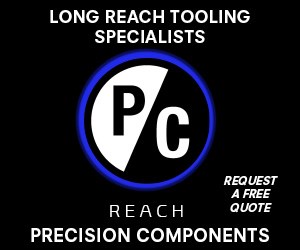High-Volume Alternative To Machining Centers
Transfer machines that are flexible rather than dedicated can run large quantities without dedicating labor or floorspace. (Includes video.)
Has there been an overreaction against transfer machines? Many production facilities devote rows or banks of machining centers to running high-volume jobs, on the theory that all of these machining centers can easily be redeployed if the shop’s product mix changes. The problem is, the machining center is not necessarily productive for large batches. In fact, using sets of machining centers to run high-volume jobs can command considerable additional investment not just in terms of time, but also in terms of floor space and the number of operators required.
Meanwhile, transfer technology has steadily improved. Transfer machines of the past were mechanical, and difficult to reconfigure for different jobs. Manufacturers lost money when jobs dedicated to transfer machines had to be abandoned prematurely, and a preference for standard machines such as machining centers was the result. However, a transfer machine of today is likely to be a flexible CNC machine tool itself—a machine for which the only step required for changing the job number might be replacing the workholding.
The Proflex machine recently introduced by Bucci Industries’ Giuliani Division is an example of a flexible transfer machine. The video shows how the machine works. Five work stations are arranged around a vertical trunnion. One station has opposing spindles for turning, while the next four stations each offer multiple spindles for machining-center operations such as milling and drilling. The part receives some portion of its machining at each one of the stations, so that five pieces are in work at once, and anywhere from 26 to 32 spindles might be addressing different stages of the same part number at any given time.
The work can be loaded in ways that are similar to a lathe or machining center. A bar feed could load stock up to 36 mm diameter. Or a robot could load castings, forgings or blanks as large as 5 inches on a side. Bucci USA sales director David Rosbottom says the machine has been applied to making valves, small automotive parts, medical components, small arms components, and electronics and appliance parts. A typical job involves batches of at least 200,000 or annual quantities on the order of 2 million.
Another transfer-type machine that the Proflex superficially resembles is the multi-spindle lathe, which also moves parts from station to station through a vertical index. Mr. Rosbottom points out that the Proflex is, in a significant way, the exact opposite of this type of machine. On a multi-spindle lathe, the typical machining cycle might be 80 percent turning, 20 percent milling and drilling. On the Proflex, the cycle is at most 20 percent turning, with the remaining 80 percent milling and drilling. Thus, the machine is specifically suited to machining-center-type parts—particularly the sorts of parts that might otherwise be run on several machining centers at the same time.
Related Content
-
How to Start a Swiss Machining Department From Scratch
When Shamrock Precision needed to cut production time of its bread-and-butter parts in half, it turned to a new type of machine tool and a new CAM system. Here’s how the company succeeded, despite the newness of it all.
-
Building Machines and Apprenticeships In-House: 5-Axis Live
Universal machines were the main draw of Grob’s 5-Axis Live — though the company’s apprenticeship and support proved equally impressive.
-
5 Tips for Running a Profitable Aerospace Shop
Aerospace machining is a demanding and competitive sector of manufacturing, but this shop demonstrates five ways to find aerospace success.

.jpg;width=70;height=70;mode=crop)











.png;maxWidth=300;quality=90)





